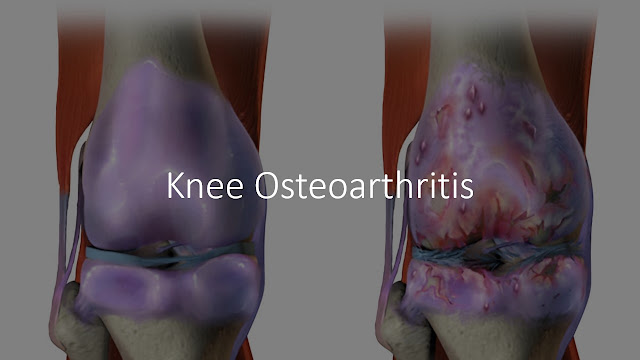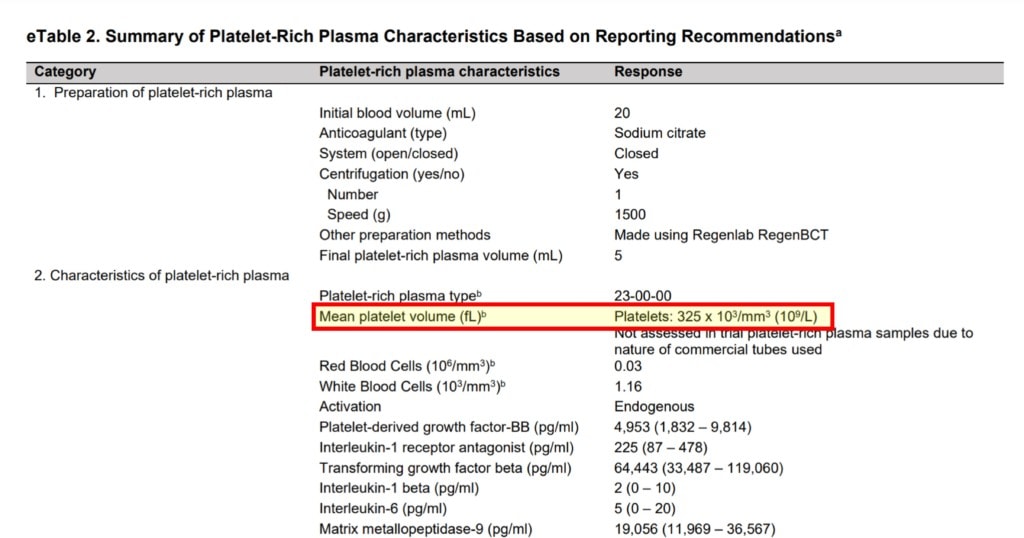Platelet Rich Plasma Injections for Knee Pain: Review of Evidence (2023)
Osteoarthritis (OA) is the most common type of arthritis. OA of the knee happens when the cartilage — the cushion between the knee joints — breaks down. This can cause pain, stiffness, and swelling.
There is no cure for OA of the knee, but treatment can help relieve discomfort and slow the damage. It can improve also your quality of life and help you better keep up with your day-to-day activities.
Your treatment options will depend on your individual needs. These include your medical history, level of pain, and the impact of OA on your daily life.
Treatment usually includes a combination of therapies and lifestyle choices.

Injections of platelet-rich plasma (PRP) are a novel treatment for managing pain related to osteoarthritis (OA) of the knee. Some PRP preparations have approval from the Food and Drug Administration (FDA), but approval does not yet cover the use of PRP in OA of the knee. Nevertheless, some clinics may offer it “off-label”.
Following is a review of the available effectiveness data taken from clinical, and real-world studies of PRP in knee OA.
There is no cure for OA of the knee, but treatment can help relieve discomfort and slow the damage. It can improve also your quality of life and help you better keep up with your day-to-day activities.
Your treatment options will depend on your individual needs. These include your medical history, level of pain, and the impact of OA on your daily life.
Treatment usually includes a combination of therapies and lifestyle choices.

Injections of platelet-rich plasma (PRP) are a novel treatment for managing pain related to osteoarthritis (OA) of the knee. Some PRP preparations have approval from the Food and Drug Administration (FDA), but approval does not yet cover the use of PRP in OA of the knee. Nevertheless, some clinics may offer it “off-label”.
Following is a review of the available effectiveness data taken from clinical, and real-world studies of PRP in knee OA.
PRP vs Hyaluronic Acid
There are 22 PRP studies that show superiority over hyaluronic acid:- Bone Marrow Aspirate Concentrate versus Platelet Rich Plasma or Hyaluronic Acid for the Treatment of Knee Osteoarthritis (Medicina (Kaunas). 2021)
- Platelet-rich plasma (PRP) in osteoarthritis (OA) knee: Correct dose critical for long term clinical efficacy (Sci Rep. 2021)
- The comparison effects of intra-articular injection of Platelet Rich Plasma (PRP), Plasma Rich in Growth Factor (PRGF), Hyaluronic Acid (HA), and ozone in knee osteoarthritis; a one year randomized clinical trial (BMC Musculoskelet Disord. 2021)
- Clinical Efficacy of Platelet-Rich Plasma Injection and Its Association With Growth Factors in the Treatment of Mild to Moderate Knee Osteoarthritis: A Randomized Double-Blind Controlled Clinical Trial As Compared With Hyaluronic Acid (Am J Sports Med. 2021)
- Comparison of two platelet rich plasma formulations with viscosupplementation in treatment of moderate grade gonarthrosis: A prospective randomized controlled study (J Orthop. 2020)
- Platelet rich plasma intra-articular and extra-articular injection for the treatment of knee osteoarthritis (Zhongguo Gu Shang. 2020)
- Single and double-dose of platelet-rich plasma versus hyaluronic acid for treatment of knee osteoarthritis: A randomized controlled trial (World J Orthop. 2019)
- The combined use of platelet rich plasma and hyaluronic acid: prospective results for the treatment of knee osteoarthritis (J Biol Regul Homeost Agents. 2019)
- Intra-articular injections of platelet-rich plasma, hyaluronic acid or corticosteroids for knee osteoarthritis : A prospective randomized controlled study (Orthopade. 2019)
- Intra-articular Injection of Platelet-Rich Plasma Is Superior to Hyaluronic Acid or Saline Solution in the Treatment of Mild to Moderate Knee Osteoarthritis: A Randomized, Double-Blind, Triple-Parallel, Placebo-Controlled Clinical Trial (Arthroscopy. 2019)
- Platelet-Rich Plasma Versus Hyaluronic Acid Injections for the Treatment of Knee Osteoarthritis: Results at 5 Years of a Double-Blind, Randomized Controlled Trial (Am J Sports Med. 2019)
- Clinical therapy of hyaluronic acid combined with platelet-rich plasma for the treatment of knee osteoarthritis (Exp Ther Med. 2018)
- Clinical and radiographic comparison of a single LP-PRP injection, a single hyaluronic acid injection and daily NSAID administration with a 52-week follow-up: a randomized controlled trial (J Orthop Traumatol. 2018)
- Clinical outcomes are associated with changes in ultrasonographic structural appearance after platelet-rich plasma treatment for knee osteoarthritis (Int J Rheum Dis. 2018)
- Knee Osteoarthritis Injection Choices: Platelet- Rich Plasma (PRP) Versus Hyaluronic Acid (A one-year randomized clinical trial) (Clin Med Insights Arthritis Musculoskelet Disord 2015)
- Multiple PRP injections are more effective than single injections and hyaluronic acid in knees with early osteoarthritis: a randomized, double-blind, placebo-controlled trial (Knee Surg Sports Traumatol Arthrosc 2017)
- Intra-Articular Injections of Platelet-Rich Plasma versus Hyaluronic Acid in the Treatment of Osteoarthritic Knee Pain: A Randomized Clinical Trial in the Context of the Spanish National Health Care System (Int J Mol Sci. 2016)
- Randomized controlled trial comparing hyaluronic acid, platelet-rich plasma and the combination of both in the treatment of mild and moderate osteoarthritis of the knee (J Stem Cells Regen Med. 2016)
- Comparison of hyaluronic acid and PRP intra-articular injection with combined intra-articular and intraosseous PRP injections to treat patients with knee osteoarthritis (Clin Rheumatol. 2018)
- Growth Factors Levels Determine Efficacy of Platelets Rich Plasma Injection in Knee Osteoarthritis: A Randomized Double Blind Noninferiority Trial Compared With Viscosupplementation (Arthroscopy. 2018)
- Treatment of knee osteoarthritis: platelet-derived growth factors vs. hyaluronic acid. A randomized controlled trial (Clin Rehabil. 2018)
- Hyaluronic Acid Versus Platelet-Rich Plasma: A Prospective, Double-Blind Randomized Controlled Trial Comparing Clinical Outcomes and Effects on Intra-articular Biology for the Treatment of Knee Osteoarthritis (Am J Sports Med. 2017)
PRP vs Steroid Injections
There are 5 PRP studies that show superiority over steroid injections:
- Intra-articular platelet-rich plasma vs corticosteroids in the treatment of moderate knee osteoarthritis: a single-center prospective randomized controlled study with a 1-year follow up (J Orthop Surg Res. 2020)
- Comparative Effect between Infiltration of Platelet-rich Plasma and the Use of Corticosteroids in the Treatment of Knee Osteoarthritis: A Prospective and Randomized Clinical Trial (Rev Bras Ortop (Sao Paulo). 2020)
- Platelet-Rich Plasma Injections for Advanced Knee Osteoarthritis: A Prospective, Randomized, Double-Blinded Clinical Trial (Orthop J Sports Med. 2017)
- Comparison of Efficiency Between Corticosteroid and Platelet Rich Plasma Injection Therapies in Patients With Knee Osteoarthritis (Arch Rheumatol. 2017)
- Single-dose intra-articular corticosteroid injection prior to platelet-rich plasma injection resulted in better clinical outcomes in patients with knee osteoarthritis: A pilot study (J Back Musculoskelet Rehabil. 2018)
Bennell et al Study: The RESTORE Randomized Clinical Trial. JAMA. 2021
According to Regenexx.com:
The new study looked at hundreds of knee arthritis patients treated with what they claimed were PRP injections (1). On the surface, it’s a well-designed and documented study with a fancy name. However, unlike more than a dozen randomized controlled trials before it that showed that PRP was an effective treatment for knee arthritis, this one didn’t find that to be true (3-20). So what is the problem? The problem is the study didn’t actually use PRP.
The name of the PRP kit the authors used is called RegenLab. Independent research was performed in 2014 on that system. Here we see how it performed in that study:Note in the red and yellow highlighted box that the RegenLab PRP kit was only able to produce about 1.6X concentration of platelets, therefore not meeting the minimum requirements to be PRP of 2X (2). Given that this paper was very much available to the lead authors of this study when in the design phase, who in their right mind would pick this commercial system to study?
In addition, since these authors reported the concentration of platelets in the “PRP” samples they injected, we can also look at that data. This is from the JAMA knee arthritis paper:The average platelet count was 325. Why is that a problem? The average platelet count in normal blood is 150-450. Hence, there was no significant concentration of platelets that happened in this study. When you do the math, the concentration factor was LESS than that of the prior study on RegenLab PRP at a ridiculously low 1.2!
The name of the PRP kit the authors used is called RegenLab. Independent research was performed in 2014 on that system. Here we see how it performed in that study:Note in the red and yellow highlighted box that the RegenLab PRP kit was only able to produce about 1.6X concentration of platelets, therefore not meeting the minimum requirements to be PRP of 2X (2). Given that this paper was very much available to the lead authors of this study when in the design phase, who in their right mind would pick this commercial system to study?
In addition, since these authors reported the concentration of platelets in the “PRP” samples they injected, we can also look at that data. This is from the JAMA knee arthritis paper:The average platelet count was 325. Why is that a problem? The average platelet count in normal blood is 150-450. Hence, there was no significant concentration of platelets that happened in this study. When you do the math, the concentration factor was LESS than that of the prior study on RegenLab PRP at a ridiculously low 1.2!
Older patients need higher concentrations of PRP. What was the average age in this study? 62 years of age. Hence, a PRP concentration this low in a patient population this old was doomed to failure before the trial began.



.png)
.png)




.png)
.jpg)
Comments
Post a Comment